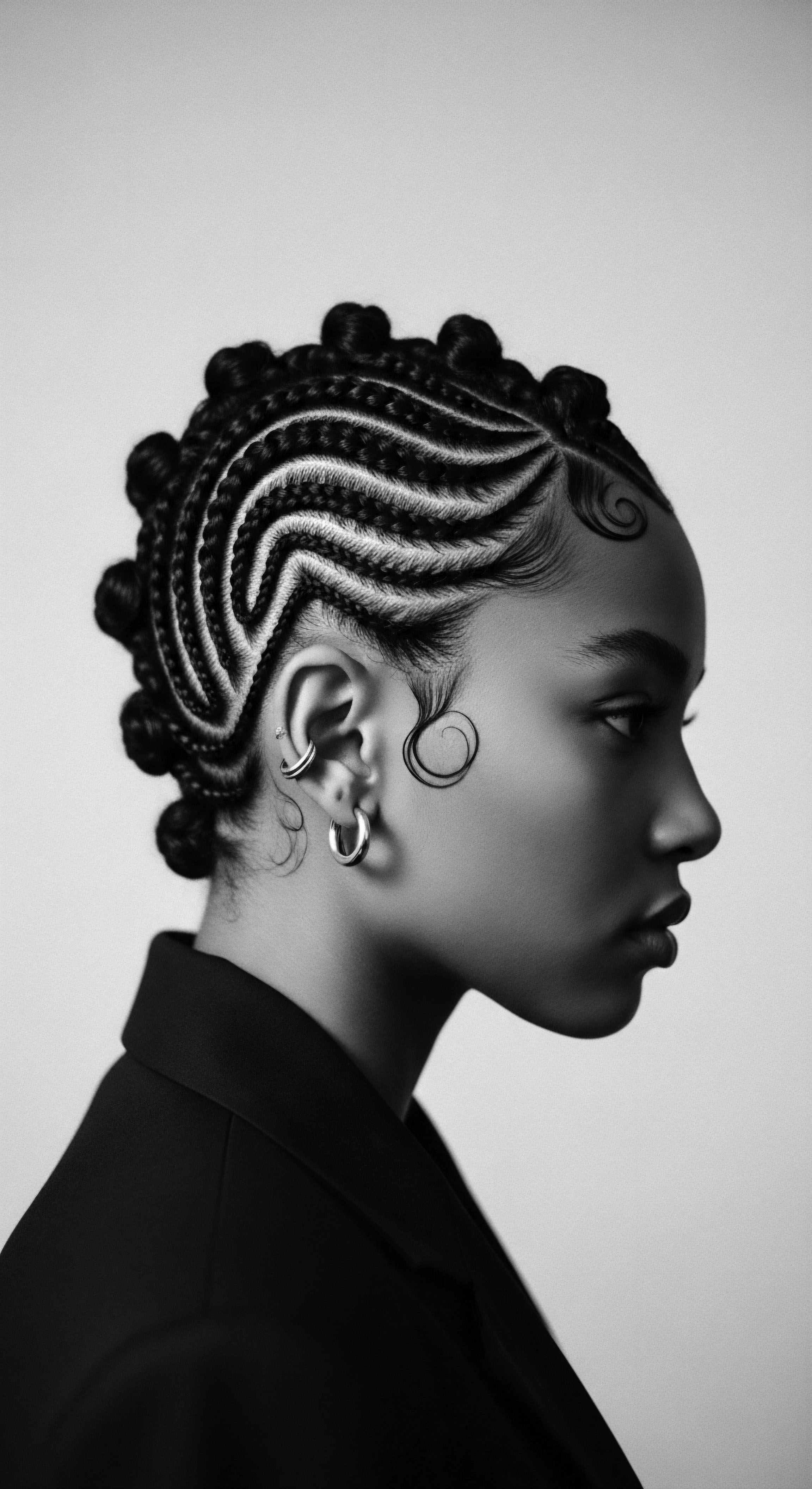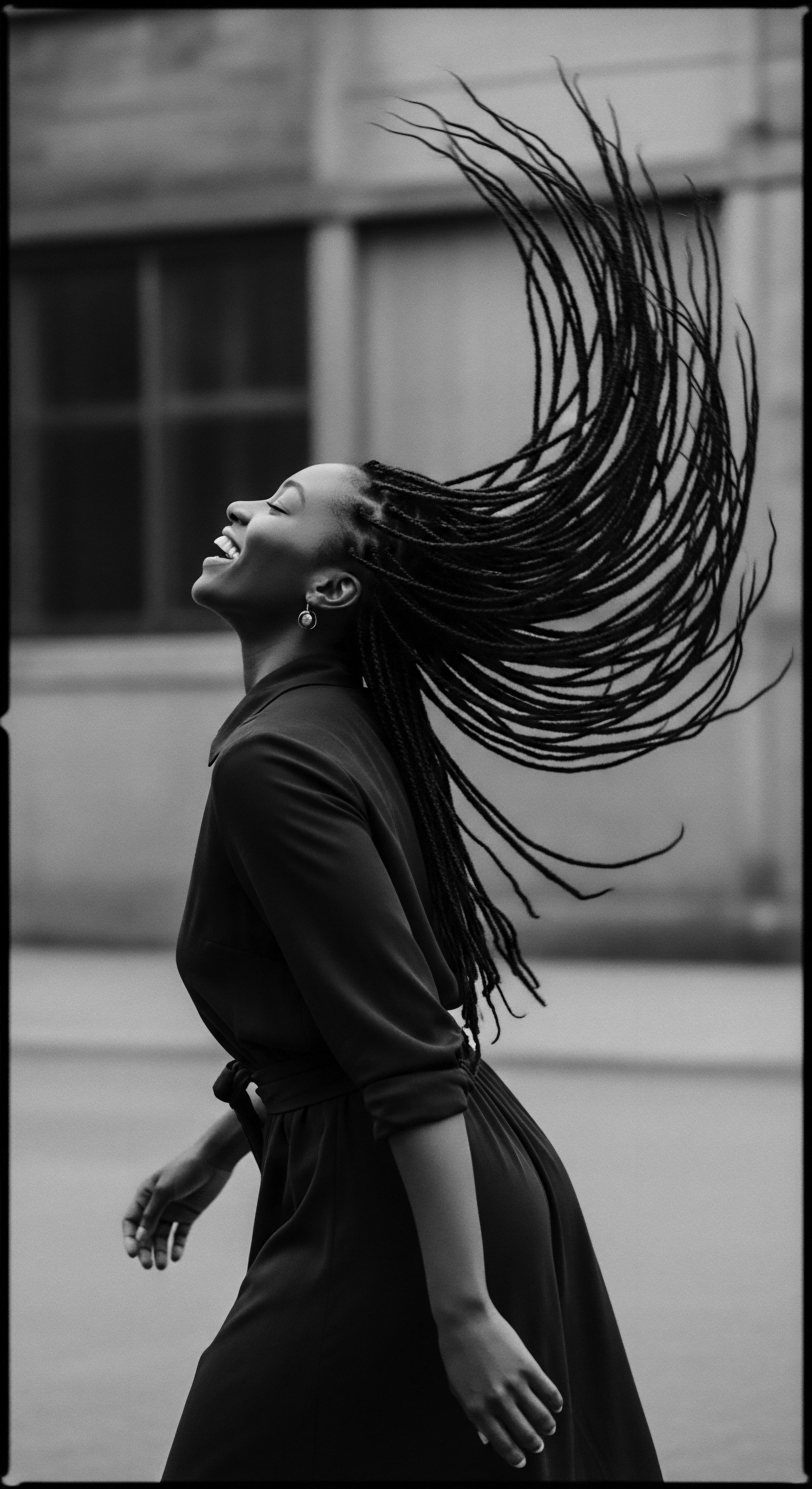
Louisiana Tignon Law
Meaning ❉ The Louisiana Tignon Law mandated head coverings for free women of color, an oppressive decree that became a symbol of cultural defiance.

What historical impact did Tignon Laws have on Black hair?
The Tignon Laws, designed to oppress, paradoxically spurred Black women to transform head-wraps into symbols of cultural pride and enduring textured hair heritage.

How did Tignon Laws influence headwrap styles?
The Tignon Laws forced Black women to cover their hair, yet they transformed this mandate into a powerful expression of textured hair heritage and defiance.

Tignon Laws Economic Impact
Meaning ❉ The Tignon Laws Economic Impact describes the coercive redirection of economic activity and suppression of visible Black prosperity through hair regulations.

How did Tignon Laws influence Black women’s hair expression?
The Tignon Laws compelled free women of color to cover their hair, paradoxically sparking innovative expressions of textured hair heritage through defiant headwraps.

What was the Tignon Law’s impact on Black hair heritage?
The Tignon Law forced free women of color to cover their hair, but they transformed this mandate into a powerful statement of cultural pride and defiance.

How did Tignon Laws shape textured hair?
Tignon Laws forced free women of color to cover their hair, inadvertently strengthening textured hair heritage through defiant artistry.

How did Tignon Laws reshape heritage?
Tignon Laws sought to diminish free Black women's public presence, but they transformed mandated head coverings into symbols of cultural heritage.

How did Tignon Laws shape heritage expression?
The Tignon Laws, intended to suppress Black women's hair as heritage, unexpectedly spurred vibrant self-expression through headwraps, redefining cultural pride.

What were Tignon Laws?
Tignon Laws mandated free women of color in 1786 Louisiana cover their hair, an act of colonial control met with resilient textured hair heritage.

What ancestral practices influenced textured hair resilience against Tignon Laws?
Ancestral practices like intricate styling and head wrapping became acts of defiance, transforming mandated coverings into powerful symbols of cultural identity and resilience.

How did Tignon laws affect Black women’s daily lives?
The Tignon law forced Black women to cover their hair, yet they transformed the headwrap into a defiant expression of their enduring textured hair heritage.

What enduring impact did the Tignon Law have on textured hair heritage?
The Tignon Law profoundly shaped textured hair heritage, inspiring resilience and cultural affirmation against efforts to suppress identity.

What was the Tignon Law’s specific impact on textured hair?
The Tignon Law mandated head coverings for free women of color, profoundly impacting textured hair heritage by transforming visible identity into defiant self-expression.

How did Tignon Laws alter cultural expression?
The Tignon Laws tried to suppress Black women's visible heritage but sparked powerful resistance, redefining cultural expression through headwraps.

What is the Tignon Law’s significance?
The Tignon Law was a colonial mandate in Louisiana aiming to suppress the visible beauty and perceived status of free women of color by requiring head coverings.

Tignon Legislation
Meaning ❉ The Tignon Legislation was a 1786 law in New Orleans compelling Black women to cover their hair, which they defiantly transformed into a symbol of cultural pride.

How did the Tignon Laws influence Black hair heritage?
Tignon Laws forced Black women to cover hair, but they transformed wraps into symbols of resistance and cultural pride.

How does Tignon legislation reflect hair’s deep heritage connection?
The Tignon legislation, designed to suppress the visible heritage of Black women's hair, instead became a canvas for powerful resistance and cultural pride.

What specific historical laws targeted Black hair in the Americas?
Historical laws in the Americas sought to control Black hair, profoundly impacting textured hair heritage and identity.

How did the Tignon Law reshape public appearance?
The Tignon Law compelled Black women to cover their hair, yet they transformed mandated wraps into bold, personal expressions of cultural heritage.

What ancestral hair traditions did Tignon laws target?
The Tignon laws targeted Black women's elaborate hair expressions of identity, status, and heritage, seeking to enforce colonial racial hierarchies.

What impact did the Tignon Laws have on Black women’s heritage?
The Tignon Laws, intended to suppress Black women's beauty, sparked a powerful reclaiming of textured hair heritage through artistic headwraps and enduring cultural resistance.

What impact did the Tignon Laws have on Black women’s hair heritage?
The Tignon Laws inadvertently spurred creativity in headwrap artistry, strengthening Black women's hair heritage and defiant identity.

How did the Tignon Laws transform headwear’s heritage for Black women?
Tignon Laws compelled Black women to cover hair, yet they transformed headwraps into symbols of cultural pride and enduring heritage.

Louisiana Tignon
Meaning ❉ The Louisiana Tignon is a historical head covering that became a symbol of cultural defiance and identity for women of color.

How did Tignon Laws influence textured hair?
The Tignon Laws, enacted in 1786 New Orleans, forced Black women to cover their hair, yet prompted a powerful display of cultural resilience and defiant self-expression.

How did Tignon Laws shape headwrap traditions?
The Tignon Laws initially sought to diminish Black women's status but catalyzed the headwrap's transformation into a symbol of defiance and cultural pride.

